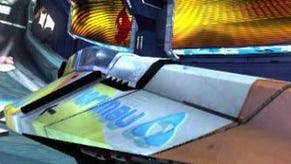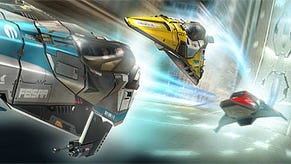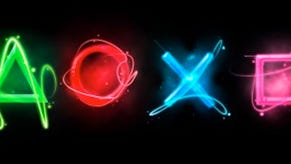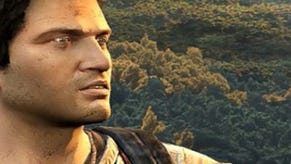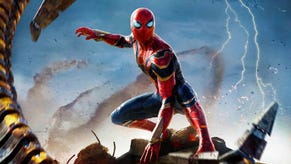Studio Liverpool: Pushing Vita's limits with Wipeout 2048
Wipeout 2048 is designed to push Vita as far as possible at tomorrow's launch. Studio Liverpool's Graeme Ankers and Stuart Tilley talk to Johnny Cullen about telling the franchise's origin story.
"We did quite a lot with the tilt sensor stuff, trying to control ships to see how that'd might work. We did lots of stuff with graphical tests as well, seeing how far we could really push the hardware. Hopefully, when people see Wipeout, they'll see we did a pretty good job on that."
When you boot up Wipeout 2048 for the first time tomorrow, you'll see an introductory sequence about the origins of Formula One, a series developer Studio Liverpool was well known before Codemasters. The video moves on from the modern day into the floating racing we all know as Wipeout.
The 1996 PSone original may have been set just after Wipeout was formed, but we've never been told of the sport's early days. Until now. It was a big decision for Studio Liverpool to make, according to co-game director Graeme Ankers.
"We'd been kicking around the idea of, 'Where do we go next with Wipeout?'" he told VG247 in a phone interview last week.
"And we always had this idea of setting it at season one of the sport, going right back to the start of the timeline. I think the idea of the chronologically is that the PSone version that released in 1996 was set in 2053 or 2055. We wanted to go back to the dawn of the sport and explore what it was like at the origin.
"Further back in the timeline, there's already the existing backstory that anti-gravity was invented in 2020."
After deciding which way to move with the series, Studio Liverpool - thanks to its position as a first-party studio - was able to procure a Vita development kit when it was just "boxes and wires".
"We were very lucky in that we had access to it before it looked anything like what you're seeing today," said fellow game director Stuart Tilley.
"We only had a small team looking at it. We were trying some experimental things out with the touch-screens, what worked, what didn't work. As the hardware evolved, that's when we started getting into the meat of the game's development."
Some of those experiments explored how Vita's unique features could fit into the gameplay. You can, for instance, use the camera to take a photo of yourself for multiplayer, and the rear touchpad to help discover prototype challenge missions.
"We did 20 or 30 different things using the cameras," said Tilley. "We did some augmented reality checks. We did stuff like seeing through windows of buildings and loads of different things like that.
"We did quite a lot with the tilt sensor stuff, trying to control ships to see how that'd might work. We did lots of stuff with graphical tests as well, seeing how far we could really push the hardware.
"Hopefully, when people see Wipeout, they'll see we did a pretty good job on that."
"I think the social aspect is probably the most exciting thing about it for me. That's the key feature going forward. I think we've done an awful lot with the launch titles, but I think we're only scratching the surface of the connected experience on how we can draw your friends, family and acquaintances into your gaming universe."
Gaming universe
Sony's been keen to embrace social media with Vita, and the focus has rubbed off onto its studios. Wipeout 2048 will feature support for cross-game app Party, where you can chat to friends using the built-in mic whilst playing different games. As Tilley put it, one friend could be playing Uncharted and the other is playing Wipeout whilst talking to each other. You'll also be able to invite someone into your game using Party.
Crossplay support is also included in 2048, allowing Vita players to face off against those playing online on PS3 using Wipeout HD Fury.
As Tilley noted, there's a big potential for social and dedicated game devices.
"I think that's a big part of it," he said. "Always the strive to connect, even when they're playing single-player. They're still connected to the network and they're still connected to their friends. I think it's a big thing, and I think it's a really big area for the future of console gaming. I think it's only going to become more and more that way.
"Obviously, Vita gives you plenty of features: you've got your PSN, built-in microphones and cameras to allow you to do loads of cool stuff."
Ankers added: "I think the social aspect is probably the most exciting thing about it for me. That's the key feature going forward. I think we've done an awful lot with the launch titles, but I think we're only scratching the surface of the connected experience on how we can draw your friends, family and acquaintances into your gaming universe."
But why did Studio Liverpool choose to make 2048 for Vita rather than PS3? The temptation of being part of another PlayStation hardware launch was too much to turn down.
"Wipeout has traditionally been a launch title for new PlayStation hardware, and it's something we get a real buzz out of doing," said Tilley.
"I think it's a really good game for being a graphical showcase of a new hardware platform, which we've done a bunch of times. If you buy a Vita, chances are Wipeout's one of the best ways to show off what your shiny new toy's capable of doing.
With 2048 being kicked out the door tomorrow, the next focus is post-launch support. There'll be an announcement in "the next few weeks" on what to expect on the DLC front, according to Ankers.
"I guess I'll give you a bit of a hint at it," he said. "It's something we're going to do it in such a way that will reward our existing Wipeout community as well."
Graeme Ankers and Stuart Tilley are game directors at Studio Liverpool. Wipeout 2048 launches tonight in Europe and the US alongside PlayStation Vita.


